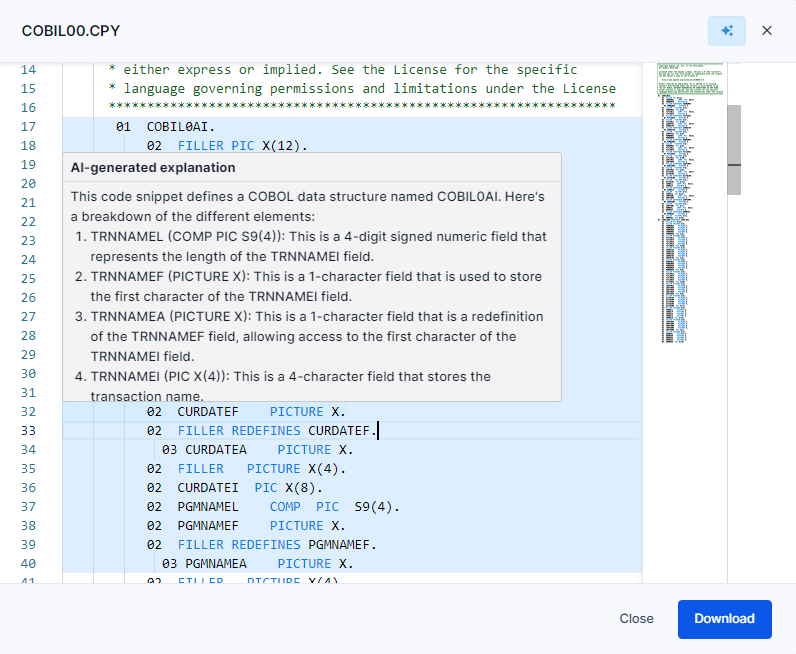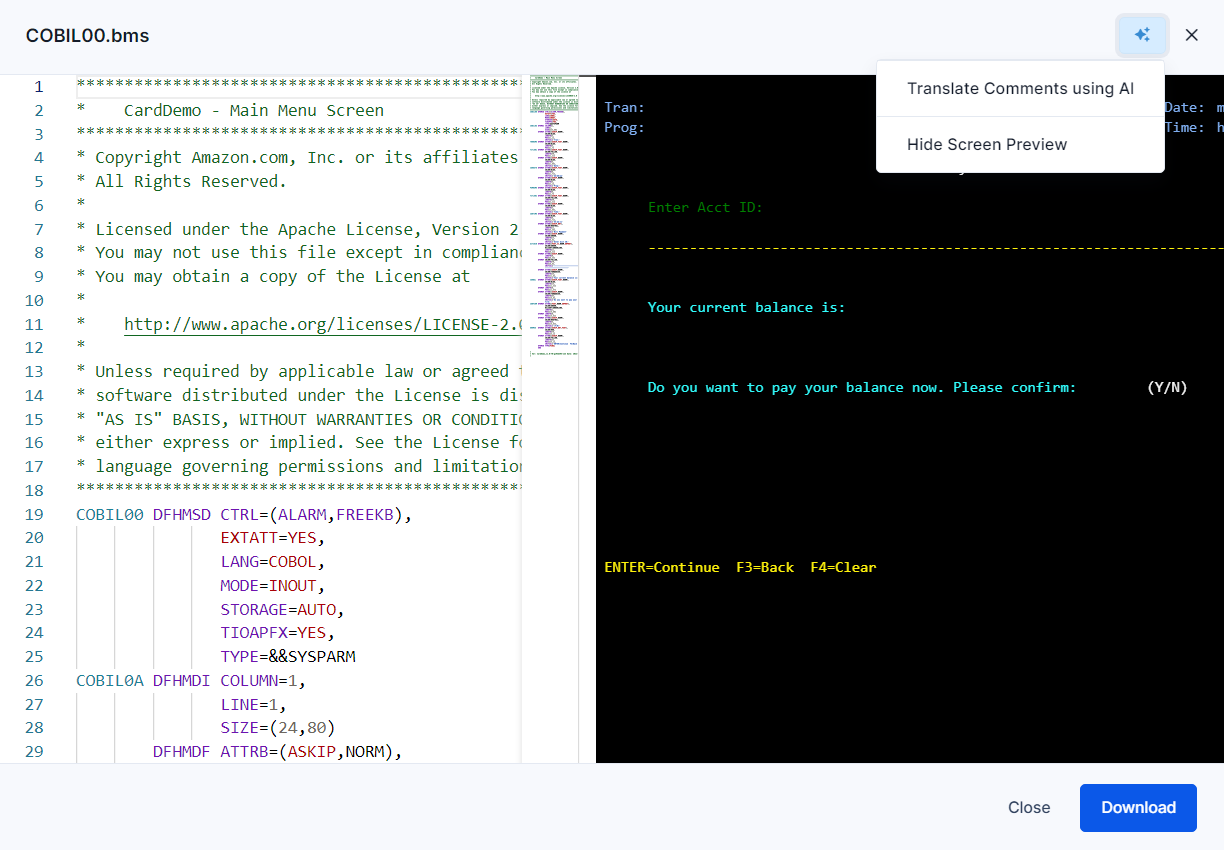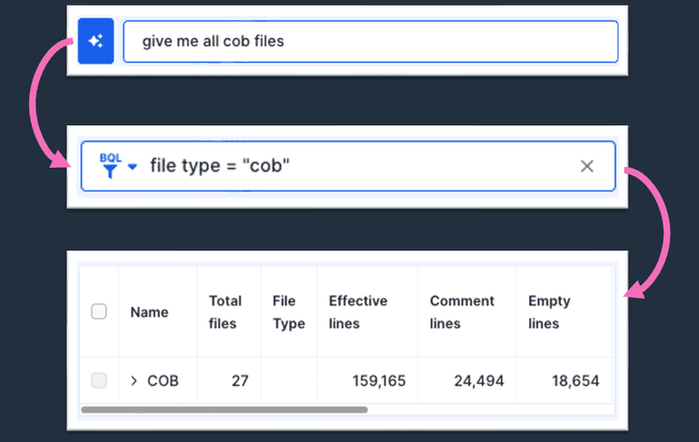Generative AI
AWS Blu Insights was designed and released with the goal of lowering the barriers to modernization, automating repetitive tasks, establishing standards, streamlining processes, and expediting onboarding. Working backwards, we built and iterated over dozens of features to address those requirements (e.g. code inventory, dependencies analysis, project management, versions management and code transformation). We tirelessly continue this investment by mixing innovation initiatives and incorporating users' feedback on ongoing projects. The rise of Generative AI (GenAI) and services like Amazon Bedrock allow us to easily deliver and rapidly imagine more features. We are excited to present the available features across various areas of mainframe codebase assessment and code transformation support.
Code Summary

Code Explanation

BMS Preview (User Screen Design Preview)

BQL Generation

Comments Translation

Classification

Code Transformation

Notes-to-actions “Do it for me!”

Activities Summary

As impressive as LLMs are, the current level of generative AI technology is not perfect and LLMs are not infallible. Bias and incorrect answers, although rare, should be expected. Please exercise reasonable caution when relying on AI outputs. For more information refer to What are Large Language Models (LLM)? and our AWS Responsible AI Policy.